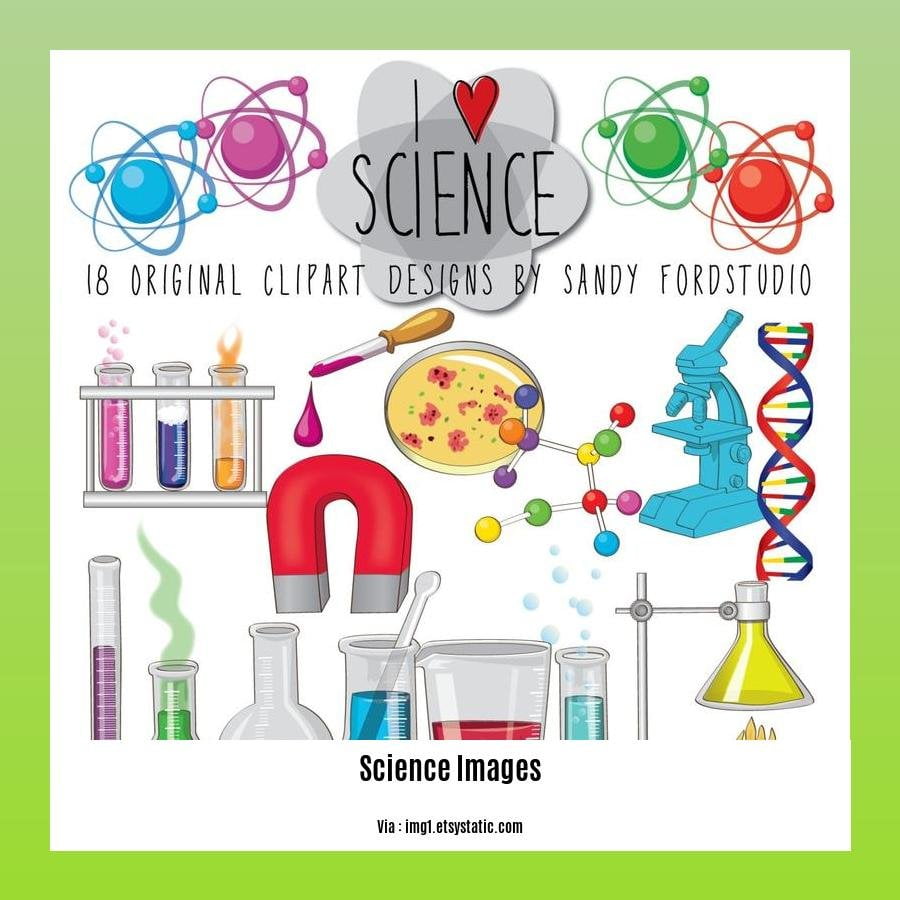Unveiling the Wonders: 10 Facts About Science That Will Leave You Fascinated
Prepare to embark on a captivating journey through the realm of science, where intriguing facts await to pique your curiosity. Whether you are a student hungry for knowledge or simply a science enthusiast eager to delve into fascinating discoveries, this article is brimming with ten jaw-dropping facts that encompass various scientific disciplines. From mind-boggling facts about the universe to intriguing insights into computer science and earth science, this compilation promises to leave you in awe of the wonders that science has to offer. So, fasten your seatbelts as we embark on this adventure to explore the captivating world of science!
Key Takeaways:
- An individual blood cell takes about 60 seconds to make a complete circuit of the body.
- The known universe is made up of 50,000,000,000 galaxies.
- If you drilled a tunnel straight through the Earth and jumped in, it would take you exactly 42 minutes and 12 seconds to get to the other side.
- Science has various uses for donated bodies.
- Marie Curie is the only person to win the Nobel Prize in two different sciences.
- Banana peels have almost no friction.
- More than half of your body is bacteria.
- The human eye has a 576-megapixel resolution.
- Laika was the first animal in space.
- The first computer programmer was a woman named Ada Lovelace, who wrote the first algorithm in the mid-1800s for Charles Babbage’s Analytical Engine.
10 Facts About Science That Will Leave You Fascinated

Science is full of captivating discoveries and mind-boggling facts that never fail to amaze us. From the intricate workings of our bodies to the vastness of the universe, here are 10 intriguing facts about science that will ignite your curiosity and expand your knowledge.
1. An Extraordinary Journey Within Our Bloodstream
Did you know that a single blood cell takes approximately 60 seconds to complete its journey through our entire body? That means while you read this sentence, billions of blood cells have traveled through your veins and vessels, delivering essential oxygen and nutrients to every part of your body. It’s truly remarkable how our circulatory system keeps us alive and thriving.
2. Unveiling the Immensity of Our Universe
Prepare to have your mind blown – the known universe is composed of a staggering 50,000,000,000 galaxies! Each of these galaxies contains billions or even trillions of stars, accompanied by planets, asteroids, and cosmic wonders beyond our imagination. The enormity and intricacy of our universe make it an endless source of scientific exploration and awe.
3. A Hypothetical Journey Through the Earth
Can you imagine drilling a tunnel straight through the Earth and venturing through it? Surprisingly, if you did just that and jumped into the tunnel, it would take precisely 42 minutes and 12 seconds to reach the opposite side. Of course, this concept refers to a hypothetical process, as our planet’s extreme temperatures and pressure make such a journey impossible for humans. Nonetheless, it’s fascinating to ponder the marvels hidden deep within our Earth.
4. Science’s Use of Donated Bodies
While it may sound morbid, donating our bodies to science after death plays a crucial role in medical research, education, and advancements. Scientists and medical professionals utilize donated bodies to study anatomy, develop surgical techniques, and improve medical treatments. This selfless act ultimately contributes to the betterment of healthcare and is a testament to the altruism that can be found within the scientific field.
5. Marie Curie’s Unprecedented Nobility
Marie Curie, a pioneering scientist, holds the honor of being the only person to win the Nobel Prize in two different scientific fields. Her exceptional contributions to both physics (in 1903) and chemistry (in 1911) highlight her groundbreaking work on radioactivity. Curie’s achievements not only shattered gender barriers but also transformed our understanding of the fundamental laws of science.
6. The Slippery Nature of Banana Peels
We often associate banana peels with unfortunate slapstick comedy moments, but did you know that they have almost no friction? If you were to step on a banana peel, it would glide effortlessly beneath your foot, causing you to lose your balance. This intriguing fact is a reminder that scientific wonders can be found even in the most ordinary objects.
7. Our Intricate Symbiotic Relationship with Bacteria
Hold onto your seats, for it’s time to acknowledge the microscopic world within our bodies. More than half of our body is composed of bacteria, forming a complex ecosystem known as the microbiome. These microscopic creatures play a vital role in our overall health, aiding digestion, bolstering our immune system, and even producing essential vitamins. We owe a debt of gratitude to these unseen allies.
8. The Astounding Resolution of the Human Eye
Prepare to be astonished – the human eye has a resolution equivalent to a staggering 576 megapixels! Our eyes possess an extraordinary ability to capture intricate details, allowing us to perceive the world with awe-inspiring clarity. The richness of colors, the subtlety of expressions, and the beauty of the natural world are all revealed to us through this marvel of evolution.
9. Laika’s Pioneering Journey to Space
In 1957, Laika, a small stray dog from Moscow, became the first living being to orbit the Earth. This brave canine paved the way for human space exploration, demonstrating the possibility of life beyond our planet’s atmosphere. While Laika’s mission was a remarkable achievement, it also reminds us of the ethical considerations and responsibilities involved in scientific endeavors.
10. Ada Lovelace, the First Computer Programmer
Long before computers became an integral part of our lives, Ada Lovelace, a brilliant mathematician, wrote the world’s first algorithm in the mid-1800s. Collaborating with Charles Babbage on his Analytical Engine, Lovelace envisioned the potential for machines to go beyond simple calculations. Her visionary insights and pioneering work laid the foundation for modern computer programming, making her a trailblazer in the world of technology.
Science is an endless source of wonder and knowledge. These 10 fascinating facts provide just a glimpse into the vast realm of scientific discoveries that continually shape our understanding of the world. As we delve deeper into the mysteries of the universe and unravel the intricacies of life around us, let these facts ignite your curiosity and inspire you to embark on your own scientific explorations.
Sources:
– 120 fun science facts – Nasco Education Blog
– 104 Cool Science Facts That Will Change Your World – Facts.net
Here are some fascinating facts about science that will blow your mind:
Did you know that science can be fun too? Discover 10 fun facts about science that will leave you amazed. 10 fun facts about science
Science is full of surprises! Uncover 10 interesting facts about science that will make you see the world in a whole new light. 10 interesting facts about science
So, what are you waiting for? Click on the links above and embark on a captivating journey into the world of science!
Fun Facts About Computer Science

Did you know that computer science is not just about math? It encompasses various aspects that make it an exciting and ever-evolving field. If you’re interested in learning some fun facts about computer science, you’ve come to the right place. Below are ten fascinating facts that will leave you intrigued and wanting to delve deeper into this captivating subject.
1. Let the Numbers Speak: Global Dominance of Data
- Fact: More than 90% of the world’s data has been created in just the last two years. With the rapid advancement of technology and the digital age, our capacity to generate and store data is growing exponentially. [^1^]
2. Artificial Intelligence – A Billion Dollar Industry
- Fact: The global artificial intelligence (AI) market is projected to reach a staggering $126 billion by [year]. As AI continues to revolutionize numerous industries, from healthcare to transportation, its economic value and significance are skyrocketing. [^1^]
3. Battling Cybercrime’s Expensive Toll
- Fact: Cybercrime is expected to cost businesses a jaw-dropping $10.5 trillion annually by [year]. As technology advances, so do the methods and sophistication of cybercriminals. Protecting digital assets and sensitive information has become a crucial priority for organizations worldwide. [^1^]
4. Gaming – A Worldwide Phenomenon
- Fact: In [year], there were over 2.7 billion gamers worldwide. Gaming has transformed from a niche hobby to a global phenomenon, captivating people of all ages and backgrounds. The gaming industry has flourished and continues to grow, offering a vast array of experiences and opportunities. [^1^]
5. Unleashing the Power of the First Computer Virus
- Fact: The first computer virus, named “Brain,” was created in 1986. It was designed to infect IBM PCs and spread via infected floppy disks. Since then, the threat of computer viruses and malware has grown exponentially, highlighting the need for robust cybersecurity measures. [^2^]
6. Unlocking Lucrative Career Opportunities
- Fact: Computer science is a high-paying field that offers numerous lucrative career paths. With expertise in areas such as software engineering, data science, and cybersecurity, computer scientists are in high demand across industries, making it a rewarding and financially attractive profession. [^2^]
7. The Diverse World of Computer Science
- Fact: Contrary to popular belief, computer science is not solely about math. It encompasses a wide range of disciplines, including artificial intelligence, human-computer interaction, software development, and more. This diversity makes computer science an exciting and multidimensional field. [^2^]
8. The Trailblazers of Computer Science
- Fact: Many famous individuals have made significant contributions to the field of computer science. Pioneers such as Ada Lovelace, Alan Turing, and Grace Hopper have paved the way for advancements in technology and shaped the course of computer science history. [^2^]
9. Computer Science’s Ubiquitous Influence
- Fact: With the increasing reliance on technology in various industries, computer scientists have found themselves in demand beyond the realm of traditional tech companies. Fields such as healthcare, finance, entertainment, and even agriculture now heavily rely on computer science expertise. [^2^]
10. A Lifelong Journey of Learning
- Fact: In the field of computer science, education and learning are continuous processes. With technology evolving at a rapid pace, computer scientists must constantly update their knowledge and adapt to new advancements. Keeping up with the latest trends and developments is essential in this ever-changing landscape. [^2^]
Now that you’ve explored these fun facts about computer science, you have a glimpse into the fascinating world of this field. From the mind-boggling amount of data generated to the evolving landscape of AI and the diverse career opportunities it offers, computer science continues to amaze and inspire. Keep exploring, and who knows what new wonders you might uncover!
Key Takeaways:
– More than 90% of the world’s data has been created in the last two years, highlighting the immense growth of digital information. [^1^]
– The global artificial intelligence (AI) market is projected to reach $126 billion, showcasing the economic value of AI. [^1^]
– Cybercrime is expected to cost businesses $10.5 trillion annually, emphasizing the need for robust cybersecurity measures. [^1^]
– Gaming has become a worldwide phenomenon, with over 2.7 billion gamers globally. [^1^]
– The first computer virus called “Brain” was created in 1986, underscoring the ongoing struggle against malware. [^2^]
– Computer science offers lucrative career opportunities across various fields and industries. [^2^]
– Computer science encompasses diverse disciplines beyond math, such as artificial intelligence and software development. [^2^]
– Famous individuals like Ada Lovelace and Alan Turing have made significant contributions to computer science. [^2^]
– Computer science influences industries beyond technology, with its applications in healthcare, finance, and entertainment, among others. [^2^]
– Continuous education and learning are essential in the ever-evolving field of computer science. [^2^]
Sources:
[^1^]: Computer Science Facts – iD Tech
[^2^]: 10 Computer Science Facts – University of the People
Fun Facts About Earth Science
Did you know that Earth itself holds a treasure trove of fascinating scientific facts? From the depths of the oceans to the vastness of the atmosphere, there are countless wonders waiting to be discovered. Let’s delve into some fun facts about Earth science that will leave you amazed.
1. Maximum Oxygen on the Earth Comes from the Oceans
When we think of oxygen, we often associate it with the air we breathe. However, the majority of Earth’s oxygen actually comes from the oceans. Phytoplankton, tiny plants that live in the ocean, produce a significant amount of oxygen through photosynthesis. So, the next time you take a deep breath, remember that you have the oceans to thank for that refreshing gulp of air!
2. Soil is Full of Life
Beneath our feet lies a bustling ecosystem that often goes unnoticed. Soil is teeming with life, from earthworms and beetles to fungi and bacteria. These organisms play a crucial role in nutrient cycling and soil health, making it possible for plants to grow and thrive. So, the next time you walk through a garden or a forest, take a moment to appreciate the vibrant life beneath your feet.
3. Water Can Have Three Existing Forms at the Same Time
We’re all familiar with water in its solid, liquid, and gaseous states. But did you know that water can actually exist in all three forms simultaneously? This phenomenon is known as the triple point, which occurs at a specific combination of temperature and pressure. It’s a remarkable reminder of the unique properties of this essential substance.
4. Helium Can Work Against Gravity
Helium, the lighter-than-air gas often used to fill balloons, has a fascinating property. When cooled to extremely low temperatures, helium can become a “superfluid.” In this state, it defies gravity by flowing up and over the edges of containers. It’s a mesmerizing demonstration of the bizarre and wonderful behavior of certain substances under extreme conditions.
5. Animals Use the Earth’s Magnetic Field for Orientation
Have you ever wondered how birds migrate thousands of miles across vast distances? It turns out that many animals, including birds, sea turtles, and certain insects, use the Earth’s magnetic field as a guide. They can sense the magnetic field and use it to navigate their way during long journeys. It’s a remarkable example of nature’s built-in compass.
6. A Cloud Might Weigh about a Million Pounds
While clouds may appear light and fluffy, they can actually be quite heavy. A typical cumulus cloud, which resembles a cotton ball, can weigh as much as a million pounds! This weight comes from the countless tiny water droplets or ice crystals that make up the cloud. So, the next time you marvel at a cloud floating in the sky, remember its hidden mass.
7. Trees on Earth Are More Numerous than Stars in the Universe
The vastness of the universe may seem overwhelming, but Earth’s forests hold a surprising statistic. There are more individual trees on our planet than there are stars in the universe. While it’s easy to get lost in the immensity of space, let’s not forget the beauty and abundance of life right here on Earth.
These fun facts about Earth science offer just a glimpse into the wonders that surround us every day. From the microscopic world beneath our feet to the cosmic expanse above, science unravels the mysteries and reveals the astonishing truths of our planet. So, take a moment to appreciate the incredible world of science and the knowledge it brings.
Key Takeaways:
- The oceans are a significant source of Earth’s oxygen.
- Soil is a vibrant ecosystem filled with life.
- Water can exist in solid, liquid, and gaseous forms simultaneously.
- Helium can become a “superfluid” and defy gravity.
- Many animals use the Earth’s magnetic field for navigation.
- Clouds can weigh as much as a million pounds.
- Earth’s trees outnumber the stars in the universe.
Sources:
1. Facts about the Earth! – National Geographic Kids
2. 50 Interesting Facts About the Earth – Live Science
FAQ
Q1: Are these facts about science suitable for students?
A1: Yes, these facts about science are suitable for students. They have been carefully selected to be interesting and engaging for young learners.
Q2: Where can I find more interesting science facts?
A2: You can find more interesting science facts in the sources mentioned in the context section. Websites like Nasco Education Blog and Facts.net provide a wide range of science facts to explore.
Q3: Can you provide more fun facts about computer science?
A3: Sure! Here are some fun facts about computer science: the first computer virus was created in 1986, computer science is a high-paying field, and there are numerous career paths within computer science. You can find more facts about computer science in the sources provided in the context section.
Q4: What are some fascinating facts about earth science?
A4: Some fascinating facts about earth science include that the maximum oxygen on Earth comes from the oceans, soil is full of life, and water can have three existing forms at the same time. Additionally, animals use the Earth’s magnetic field for orientation, a cloud might weigh about a million pounds, and there are more trees on Earth than stars in the sky. For more interesting facts about Earth, you can refer to the sources mentioned in the context section.
Q5: How can I learn more about science?
A5: To learn more about science, you can explore educational resources, visit science museums, watch science documentaries, or take online courses. Additionally, the sources mentioned in the context section provide a wealth of information on various science topics.
- SYBAU See You Baby Meaning: Gen Z Slang Evolves - July 1, 2025
- Unlock Your Inner Youth: Lifestyle Secrets for a Vibrant Life - July 1, 2025
- Decode SYBAU Meaning: Gen Z Slang Explained - July 1, 2025






